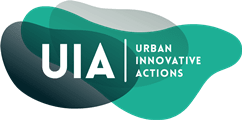Business and non-profit people brought a new perspective on the first contact with the city
The challenge of the second design sprint was to make the first contact with the city of Košice more efficient. The participants left the online space, and within two days, they created, tested, tuned, and prototyped the solutions that will be offered to the City of Košice. Read how it turned out.
The citizen’s first contact with the city
Birth of a child, graduation, purchase of an apartment, getting a dog, interest in social housing or the providing of care for the elderly – at first sight, different life situations which are connected by one place – the Office of the First Contact (KPK) of the Municipality of Košice. On the Košice “white house” ground floor, all age and social groups have been holding the door since 2006.
During this period, this workplace underwent changes, which goal was to ensure smooth operation and quality services for clients. One of the latest innovations was the introduction of an electronic calling system. Nevertheless, it is not easy to keep up with digitization and the growing demands of citizens.
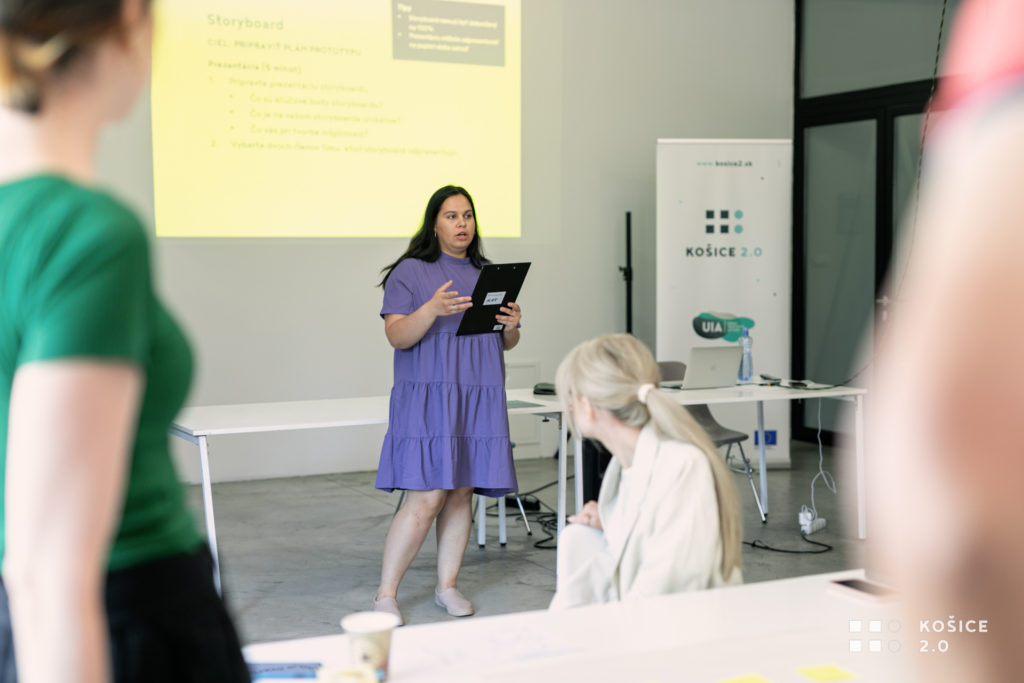
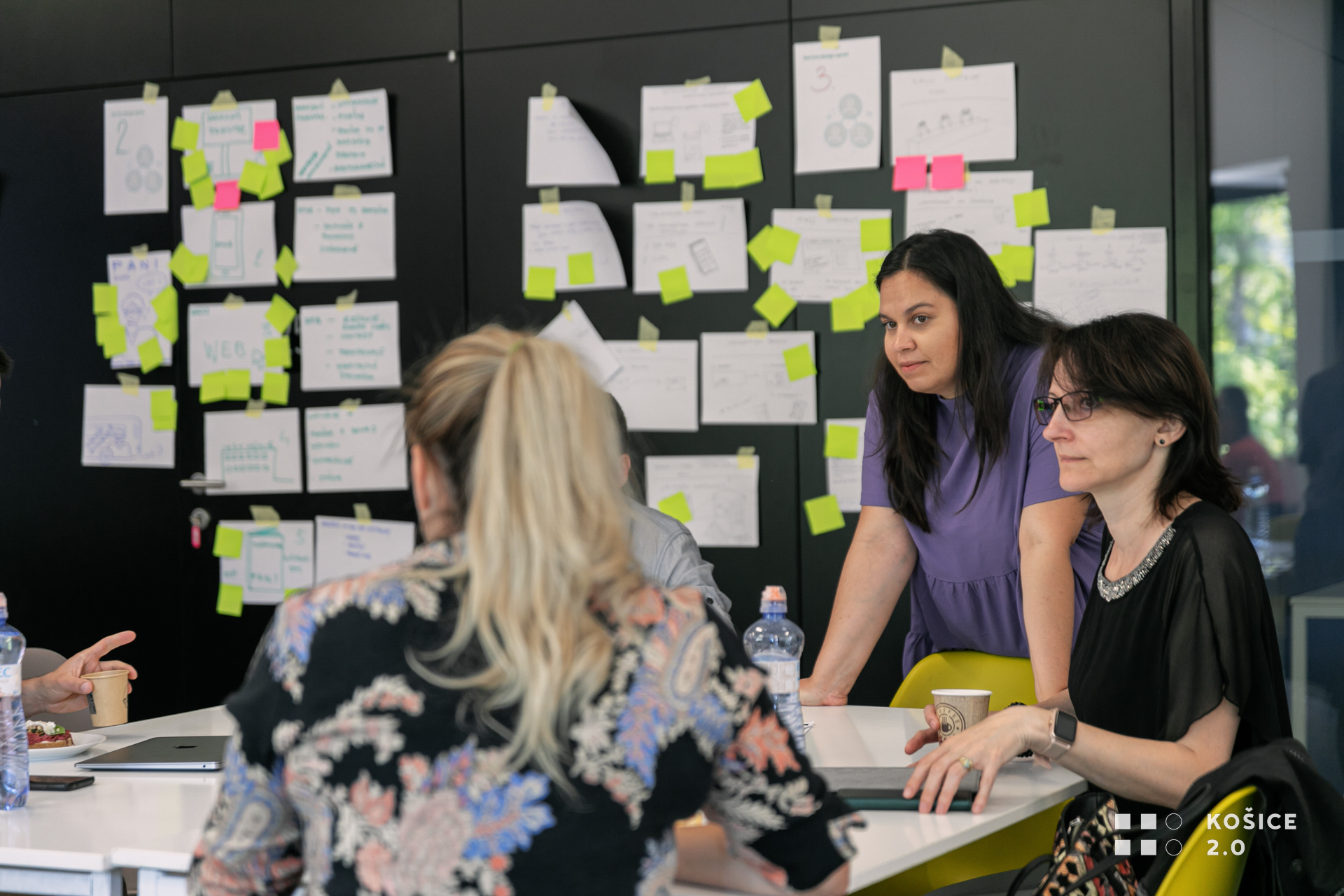
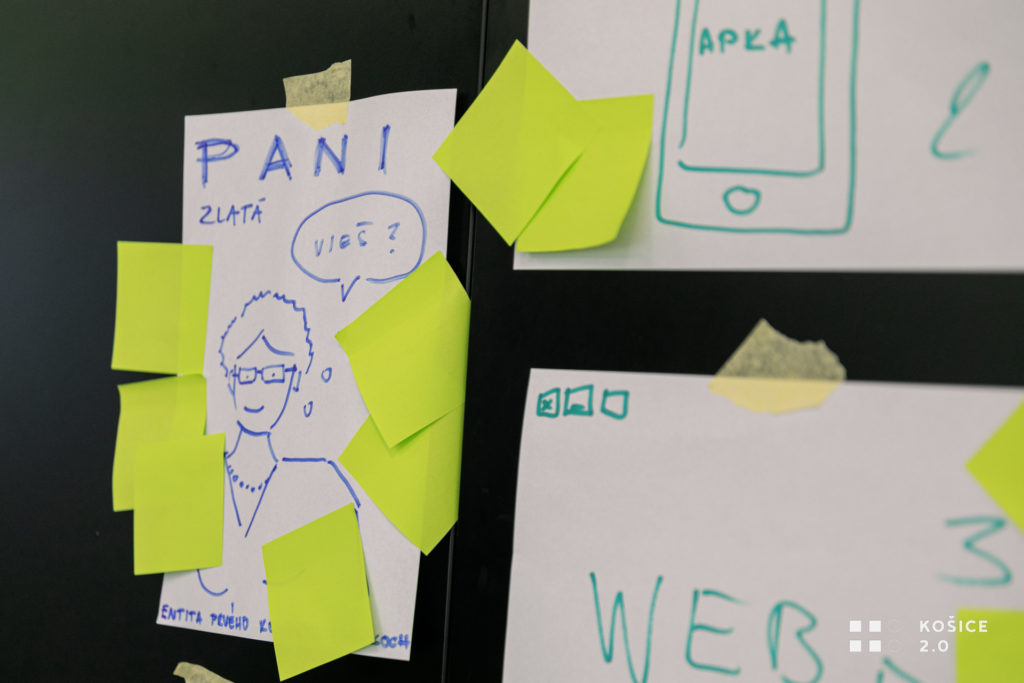
The biggest challenge is awareness
In the first quarter of 2022, the research team Services (part of the Citizen Experience and Wellbeing Institute) conducted research on the KPK service. It was found out that although the citizens are satisfied with the work of clerks, the problem arises when they want to get orientated in their own responsibilities towards the Municipality. “After evaluating the survey and in cooperation with local government representatives, we stated that there is a space for improvement within this city service,” says designer and researcher Silvia Bárdová. “We decided that during the second design sprint, we will look for ways how to help citizens to choose the most acceptable communication with the city. We also wanted to ensure that both parties – citizens and employees of the office – were satisfied,” she explains.
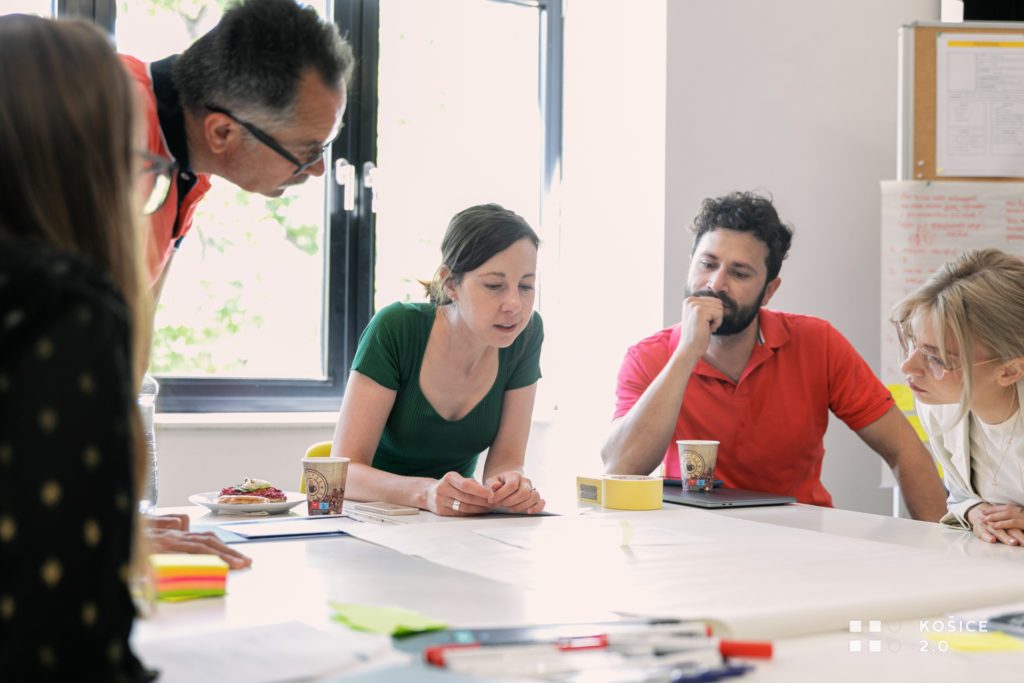
All interested parties cooperated
The first day began with interviews with administrators of KPK. The task of the participants was to get as much information as possible about the current situation. In the next step, they defined the people and their own goal of a design sprint. They ended the day with input from the decision-makers – deputy directors of the Municipality of Košice – Richard Dlhý and Branislav Ondík. From many ideas, they chose three, which proceeded to the next stage.
The second day was about prototyping. Citizens played their role here, having the opportunity to test and comment on the ideas. After incorporating the new findings, the results of the design sprint were presented to stakeholders.
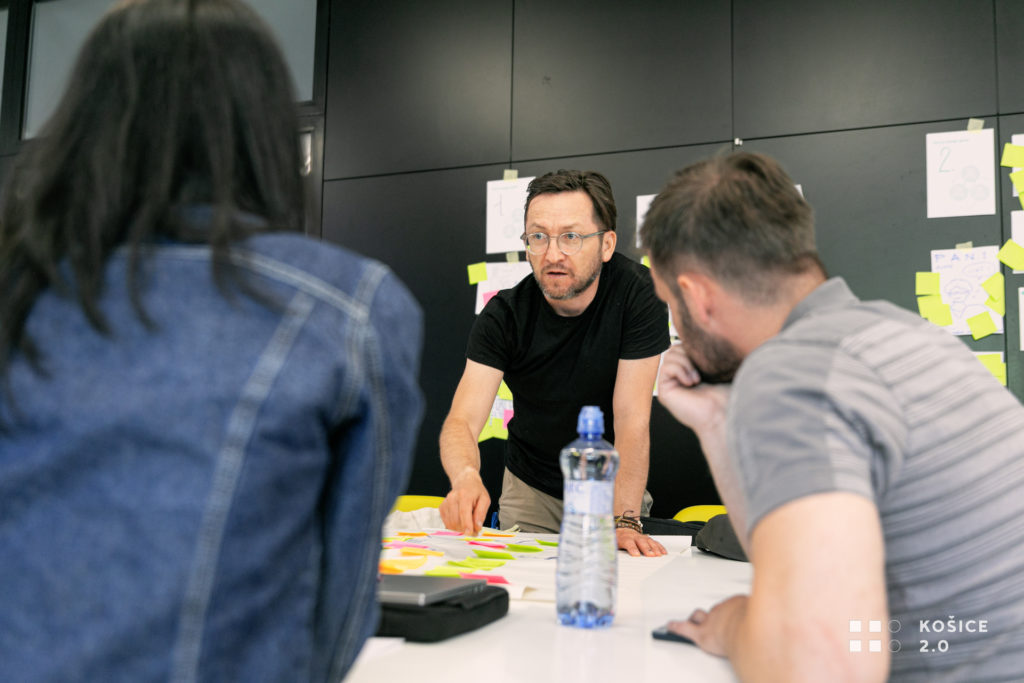
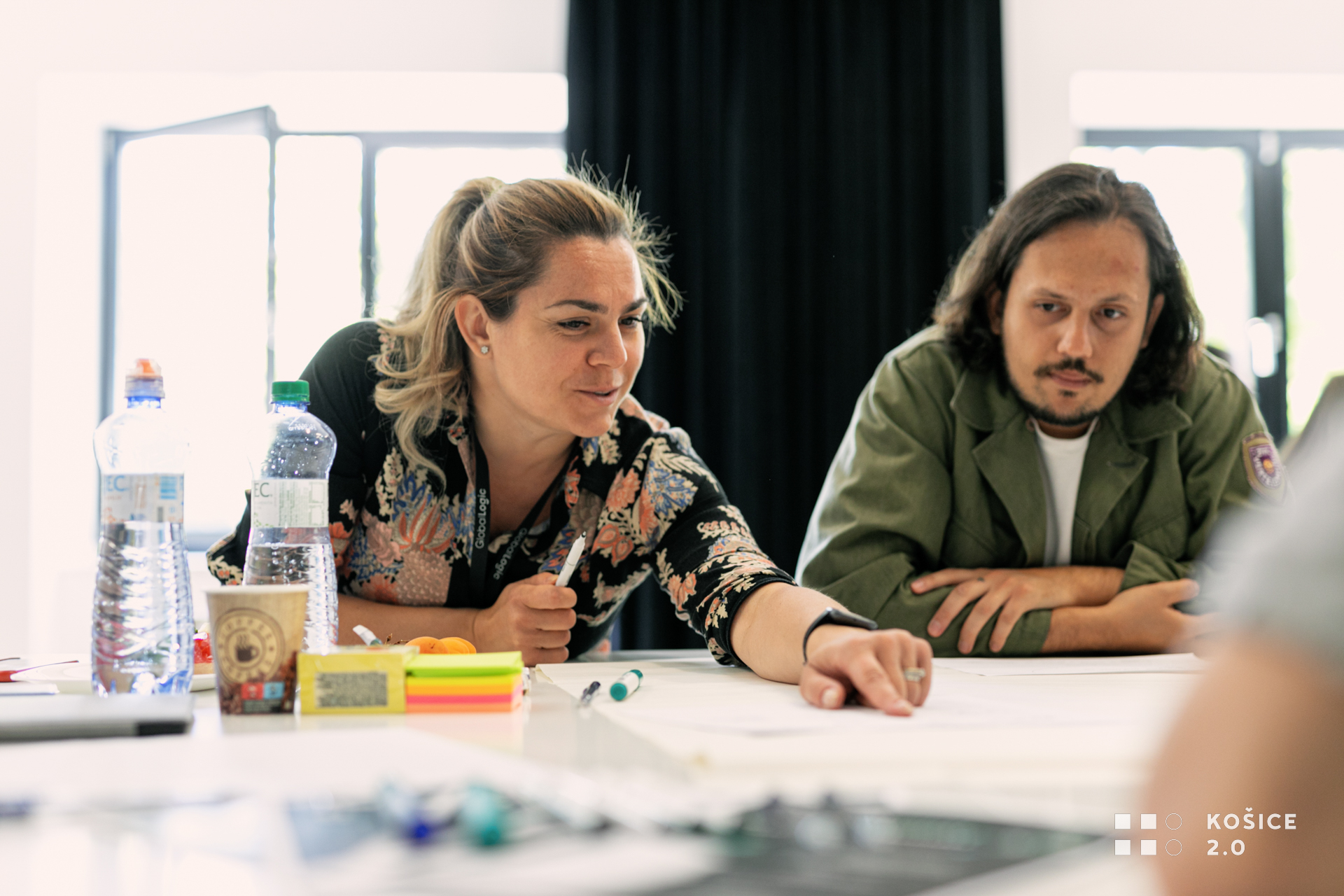
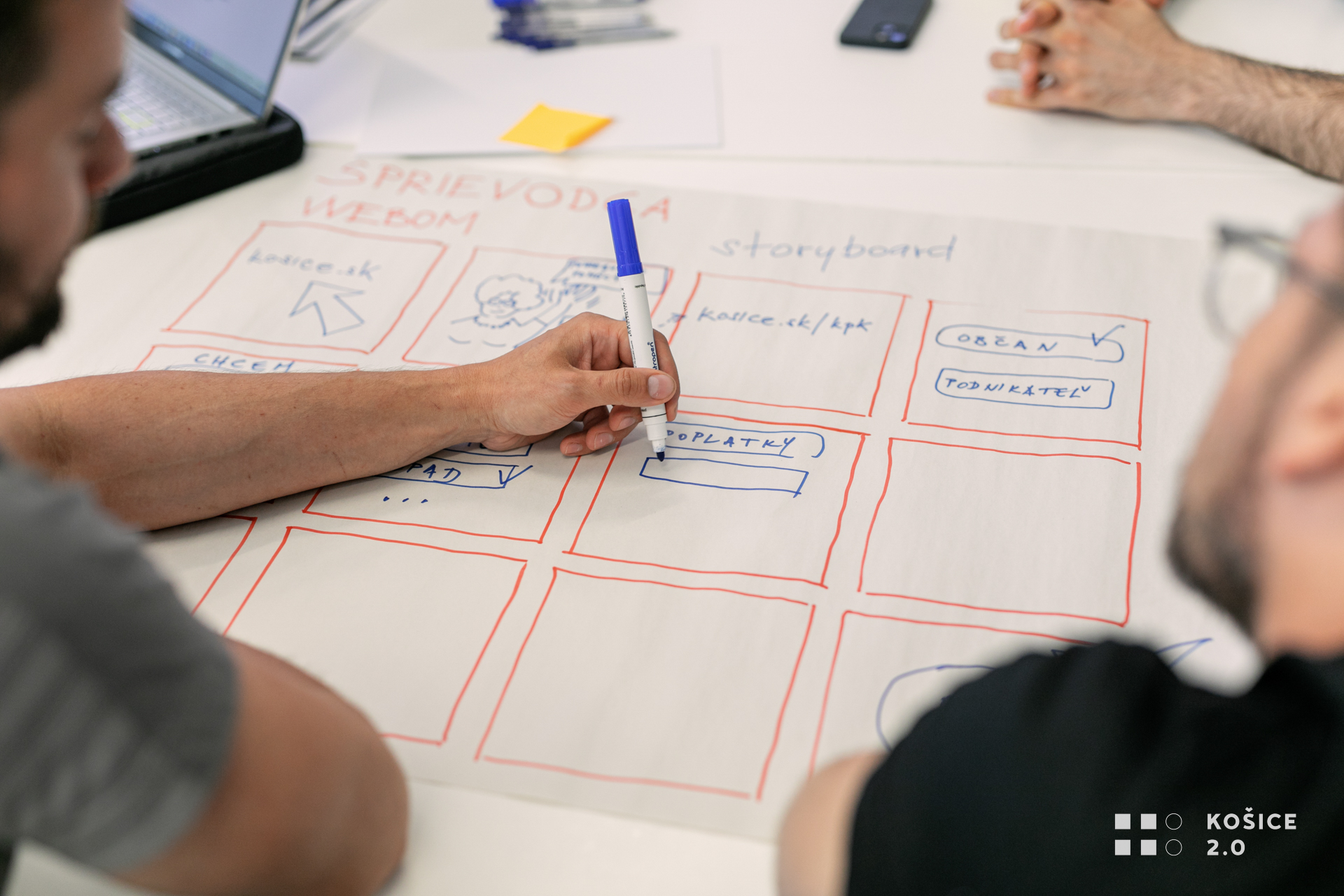
Three solutions for a better service
The first improvement was the personal coordinator, who will accompany the citizens in physical and virtual spaces. The team decided to focus on the second option and developed the idea of a virtual guide to the city website. The tool personified by virtual coordinator Mrs. Zlatá would be available immediately after arrival on the city’s website.
The second group decided to focus on the information gap, which concerns citizens’ knowledge of their obligations to the city and the possibility of equipping them without visiting the municipality. They relied on an information campaign in both public and online spaces. The institution in a personified form is again represented by Mrs. Zlatá, who is always willing to help and give advice. The medium of the campaign, which the city can use for the benefit of citizens, is public space in this case.
The third team came up with the idea of a modern call center based on intelligent speech recognition. They reacted to the need to reduce the overload of clerks due to repeated demands that do not require a personal visit to the municipality. They decided to adapt the familiar Frequently Asked Questions (FAQ) format to be available to all groups. The first step should be identifying the keywords that citizens associate with their obligation to the city – such as construction, waste fees, or dog tax. Citizens would learn to use the call center thanks to a communication campaign in a public space.
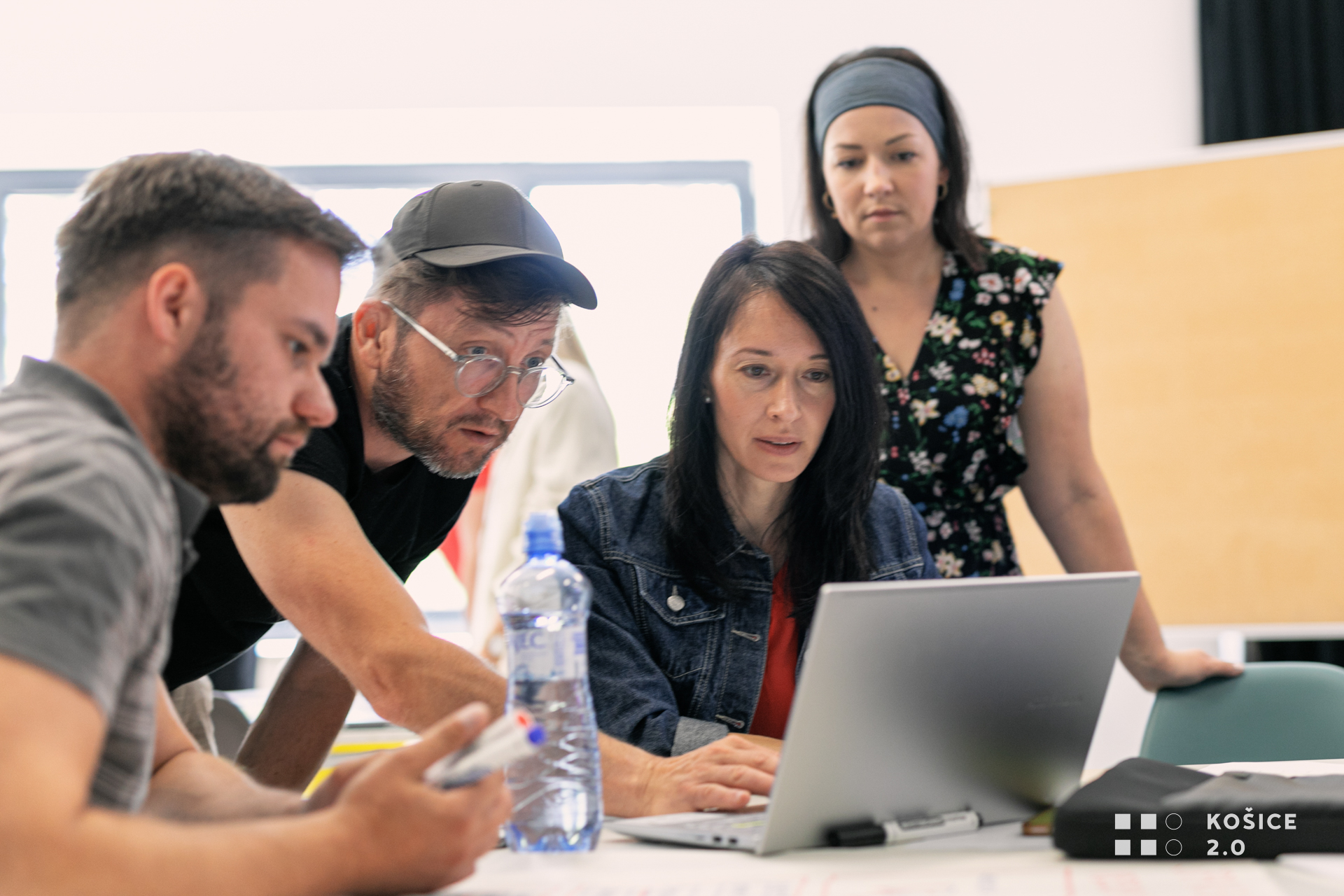
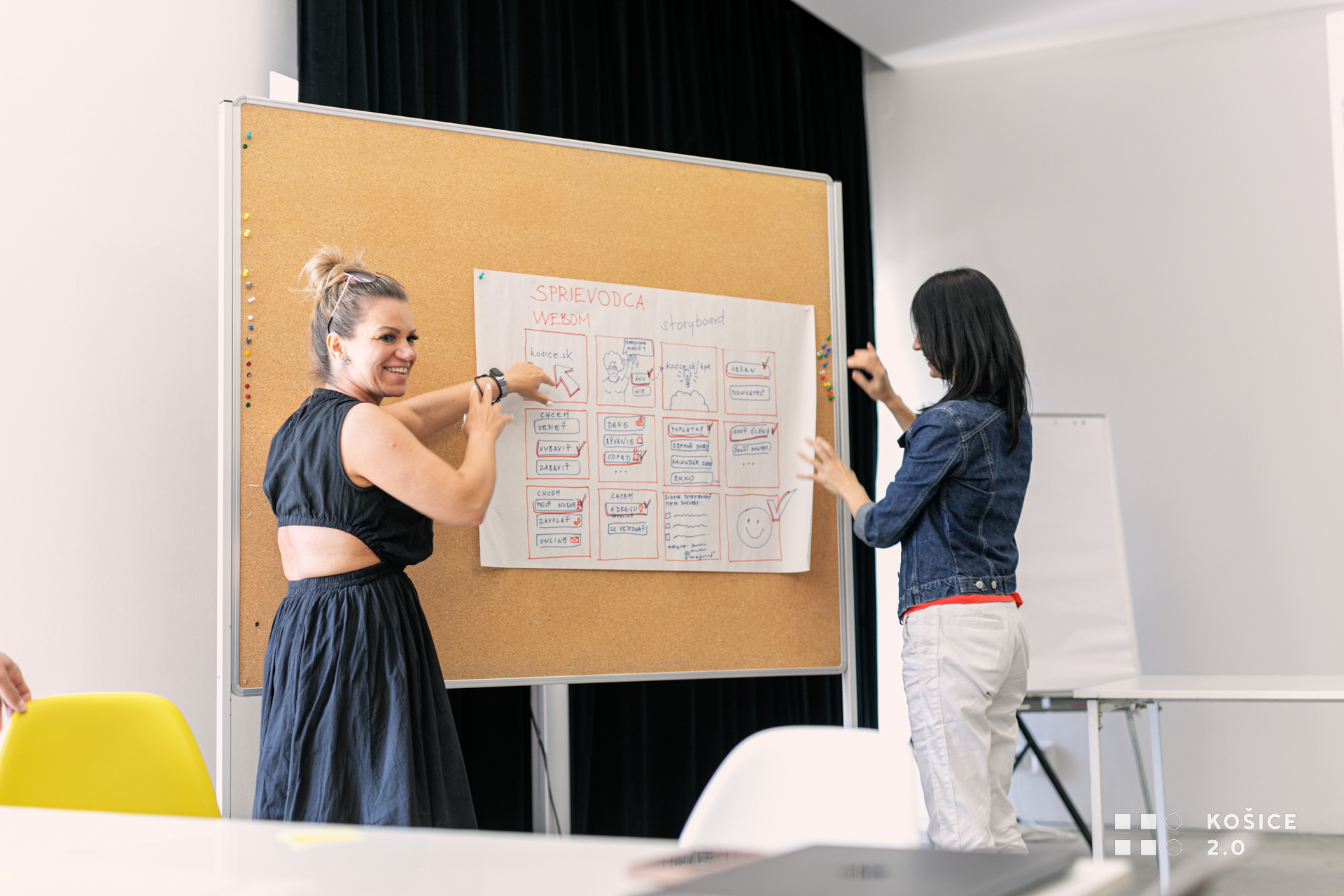
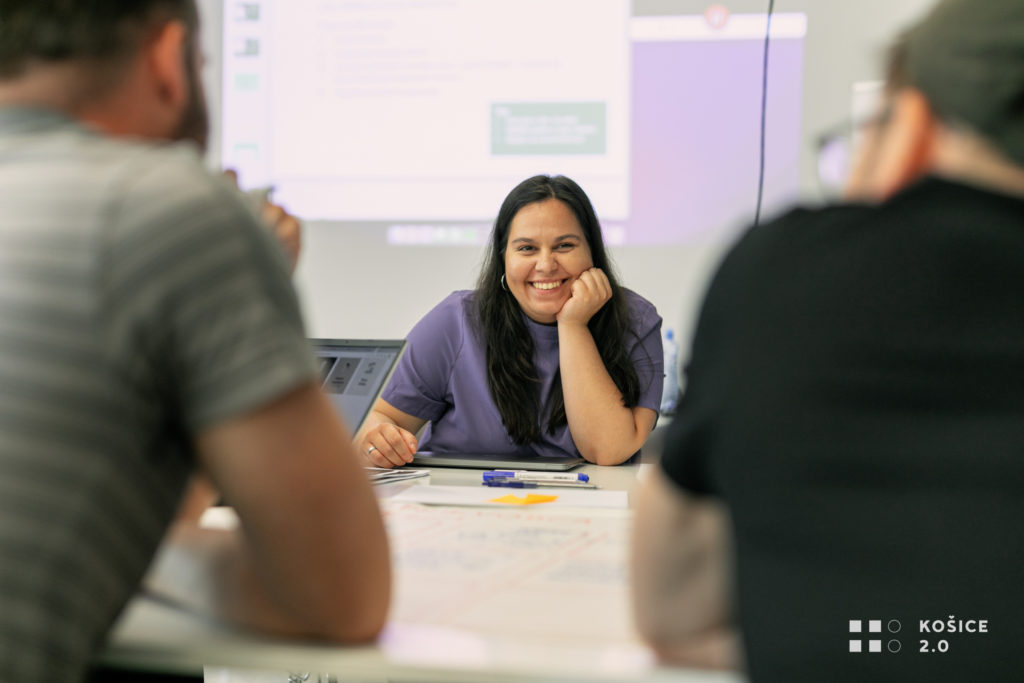
Citizen Experience – the citizen’s experience as a starting point for innovation
“In the Košice 2.0 project, we perceive a citizen who is the recipient of the city’s service as the center of our interest, ” explains Michal Hladký, director of Creative Industry Košice. Regardless of whether the service is being created or already exists, the entire process from setup to evaluation takes place from the perspective of a city resident. This is how the name Citizen Experience and Wellbeing Institute was created, which brings together researchers around the topics of urban services, data-based decision-making, and public space.
Skillful and engaged people from various sectors met again for the design sprint. Researcher Alex, who facilitated the workshop, says that the results of the sprint certainly have the potential to be implemented by the city: “The participants responded to the challenge very creatively. It is worth ensuring that its solutions reach the citizens of Košice,” she emphasizes.
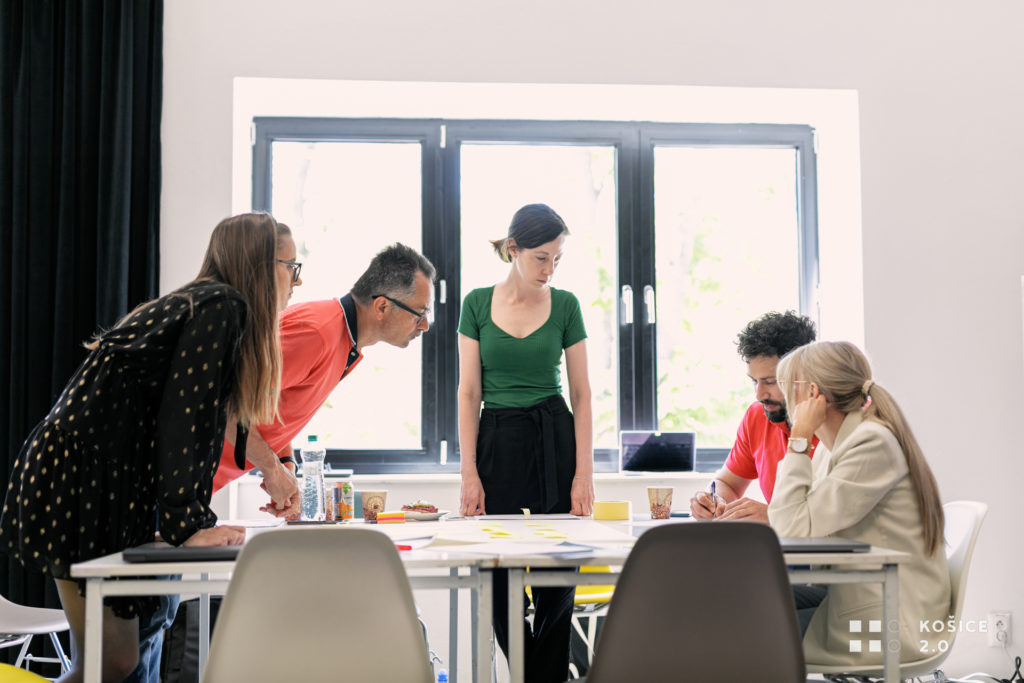
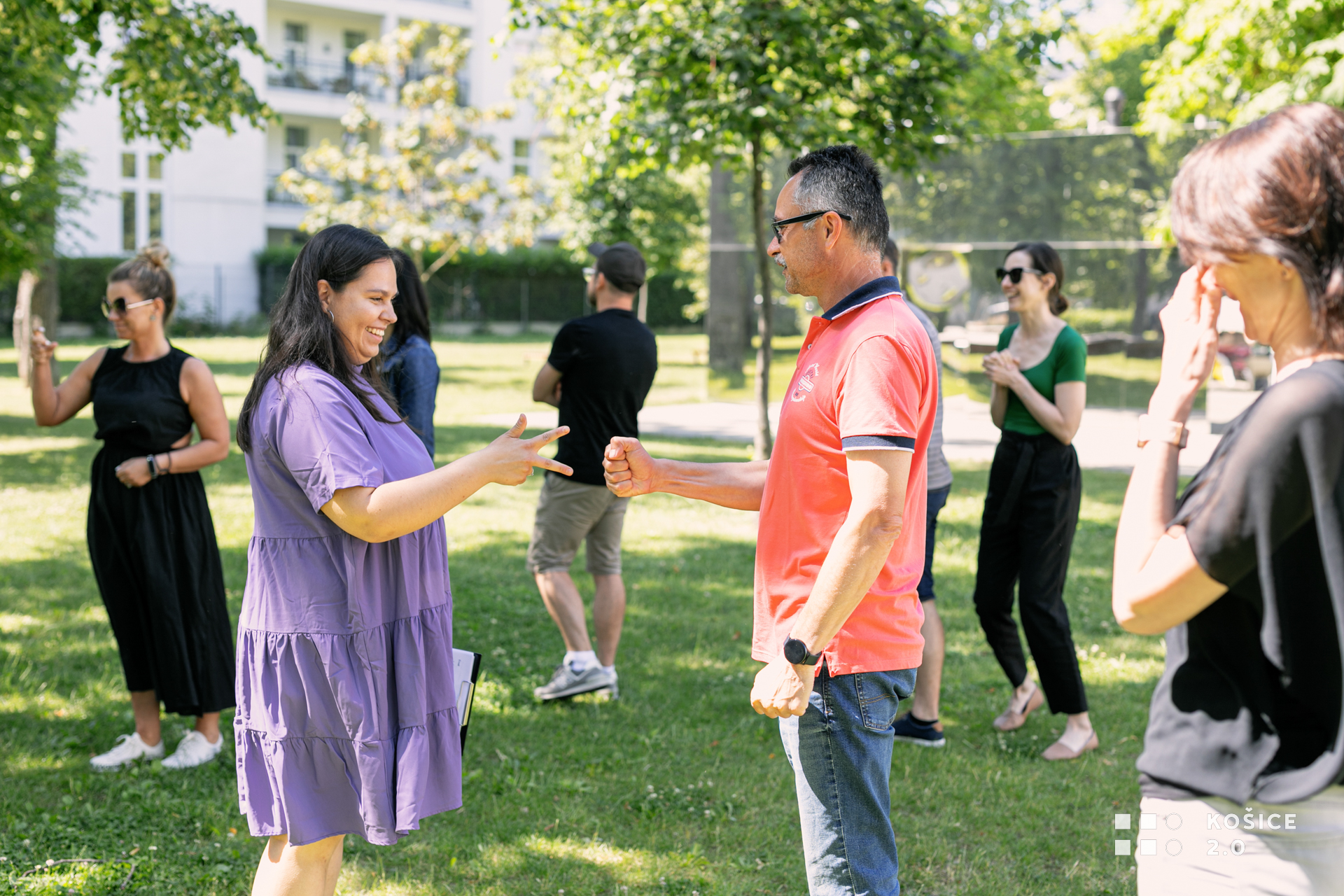

What’s next with the ideas?
Solutions developed during the design sprint have the potential to increase citizens’ trust in electronic services and teach them to use more comfortable ways of dealing with official obligations. According to Deputy Director Branislav Ondrík, it is also planned by the Municipality of Košice to use digital tools more. Thus, the city obtained several feasible ideas, which will be processed into expert recommendations and passed on for implementation.
In conclusion, we must thank all the participants who were willing to dedicate their time and ideas to the city where they live and work. As part of the Košice 2.0 project, two more design sprints await us, again bringing a new, innovative view of the city’s challenges and solutions.
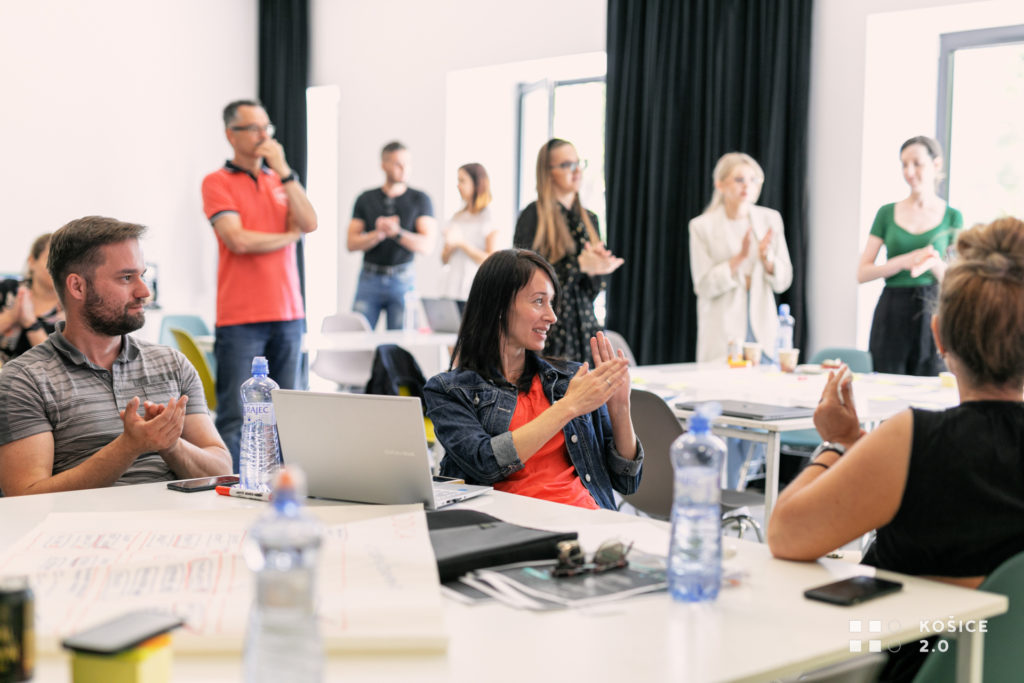
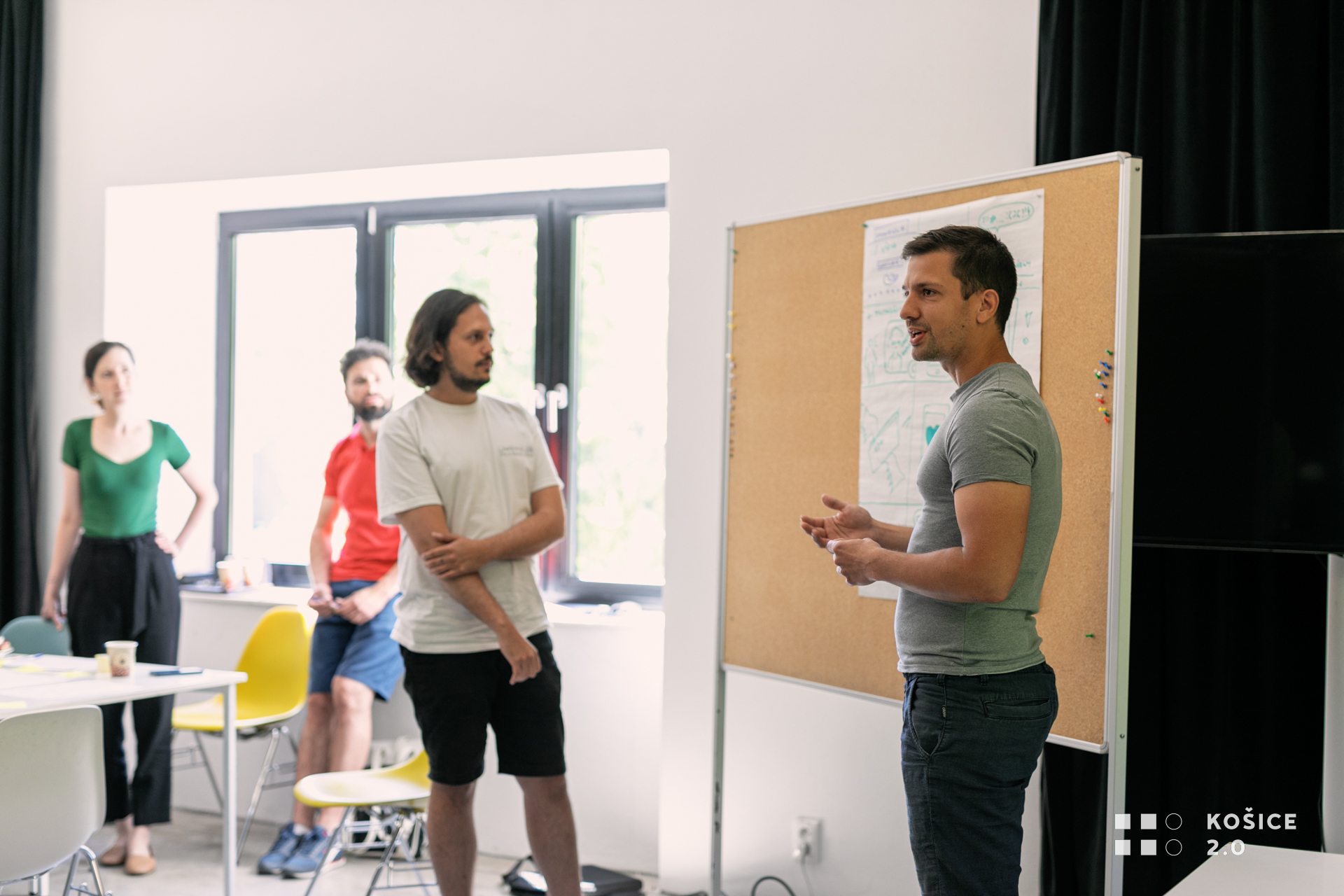
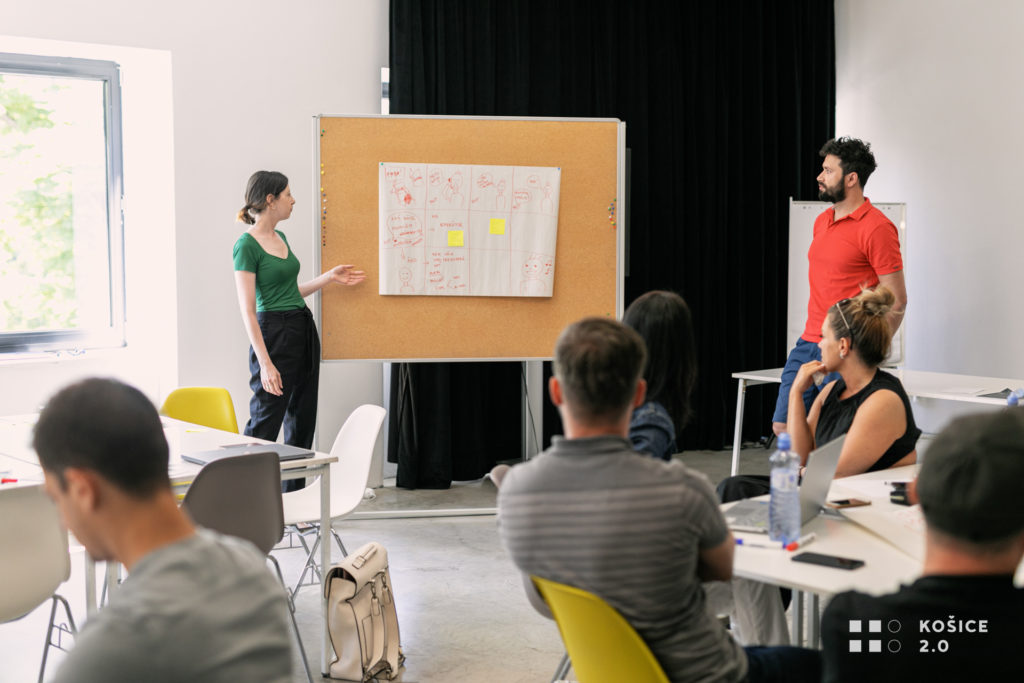

What to read next:

